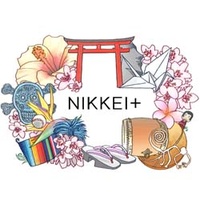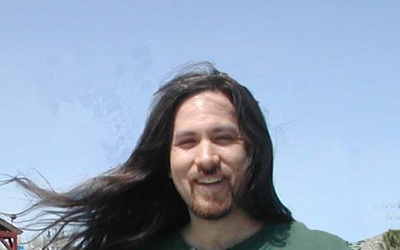Nikkei Chronicles #2—Nikkei+: Stories of Mixed Language, Traditions, Generations & Race

Being Nikkei is inherently a state of mixed traditions and cultures. For many Nikkei communities and families around the world, it is common to use both chopsticks and forks; mix Japanese words with Spanish; or celebrate the New Year’s Eve countdown with champagne and Oshogatsu with ozoni and other Japanese traditions.
This series introduces stories explore how Nikkei around the world perceive and experience being multiracial, multinational, multilingual, and multigenerational.
Each piece submitted to the Nikkei+ anthology was eligible for selection as our readers’ favorites.
Here are their favorite stories in each language.
- English:
Diary of a Mad Hapa Judo Girl
By Chanda Ishisaka - Japanese:
Kokichi-san
By Laura Honda-Hasegawa - Spanish:
The Mabuyá or the Earthquake that Brings Good Luck: Some Traditions of my Oba that are now memories of my childhood
By Milagros Tsukayama Shinzato - Portuguese:
The Candle That Burns Out
By Eduardo Goo Nakashima
Stories from this series
Gohan & Good Fortune -- Adopting a New Year and New Traditions
Nov. 26, 2013 • Jeri Okamoto Tanaka
Akemashita Omedetou. Xin Nian Kuai Le. Happy New Year & Auld Lang Syne. This is how we welcome the new year in our Japanese, Chinese, and Irish American family. I am a third-generation Japanese American Sansei with roots in the Rocky Mountains. My husband’s Irish American forebears journeyed to the Pacific Northwest across the Oregon Trail and he grew up in the Los Angeles San Fernando Valley. Our two daughters are first generation Chinese Americans, who joined our family through international adoption, traveling …
A Japanese Chief
Nov. 19, 2013 • Seitoku Shimabukuro , Luis Takanobu Shimabukuro
Yamato Taba arrived to Peru in 1921 from Okinawa, Japan, to harvest cotton in the Cañete area, 150 km south from Lima, the capital of Peru. At the end of his contract which he completed with great sacrifices, Yamato and his wife rented a little parcel of land where they grew vegetables and had sold their products in the town of Cañete and other locations. In a few years, they had saved enough money to be able to purchase the …
Diary of a Mad Hapa Judo Girl
Nov. 13, 2013 • Chanda Ishisaka
Being a martial artist was not supposed to be a part of my life. The plan for me was to focus on school and get good grades. But my dad asked my younger brother to learn judo when he was five years old and I became jealous. I asked my father if I could join. He said that I could but with the condition that I had to stay in judo until I received a black belt. At this time, …
Two Scenes, One Wall?
Nov. 11, 2013 • Célia Sakurai
That was too much, thought Mrs. K. Not even Bira gave any warning! She didn’t reply, saying only: “I’ll go check it out.” Confusing the smell of boiled daikon with that of a gas leak made her heart twist in her chest, in embarrassment, perhaps. As if all those times hadn’t been enough, when, from the kitchen door, she would say: “What a weird smell!” It was on Wednesdays that Mrs. K left a whole pile of daikon-flavored tsukemono ready …
Sammy's Shitkickers
Nov. 8, 2013 • Sakae Manning
I began to beat Sammy with his own leg braces, polished by mama to a new money shine, around the time people stopped looking at me, their eyes resting on Sammy, listening to his hospital stories, admiring his scars, a mountain range, crawling, stitch by stitch calf to heel. I would knock him in the head with his own hard, thick-soled boots. “Siblings do that sort of thing,” daddy once said as he puffed on a well-chewed pipe, smoke connecting …
What Tribe You From, Brother?
Nov. 6, 2013 • Lily Yuriko Nakai Havey
When my son Michael was in high school he was approached by a group of young Navajo men who asked him, “What tribe you from, brother?” “Tribe?” he replied, puzzled. “You look like a Dine from Shiprock.” “Shiprock?” “Yeh, you know, you guys from Shit Rock.” When they slowly started toward him he backed away. “I’m not from Shiprock. I don’t even know where that is,” he said. “Don’t know your own nation, brother?” “You’ve made a mistake. I’m not …



































